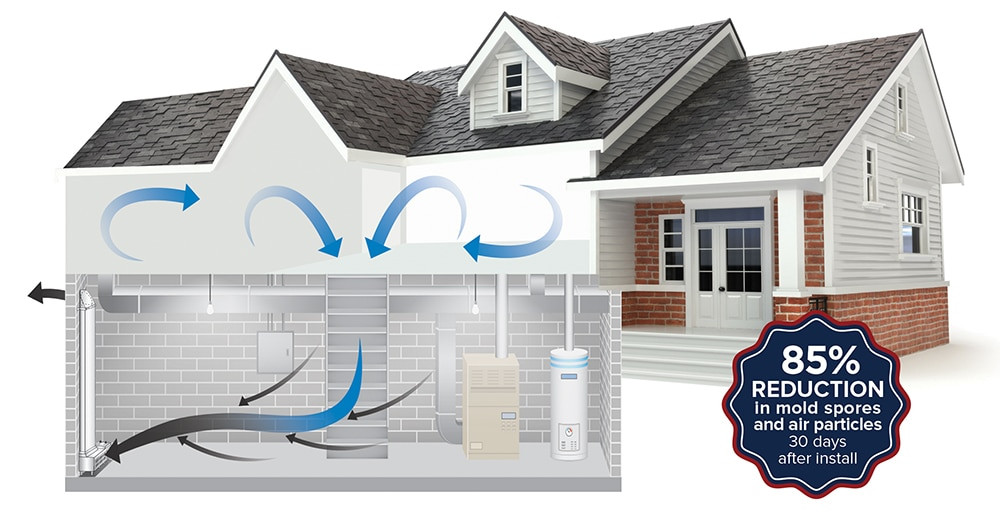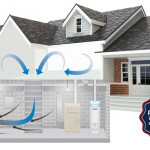How Do Our Homes Become Polluted?
Over the years, buildings have been made more airtight to conserve energy through energy-efficient construction in newer homes and by installing storm windows, densely packing insulation, and applying caulk and weather-stripping to seal cracks and other openings in older homes.
While these techniques can save money and energy, they can also trap pollutants in the home, and sometimes even generate more pollutants. High temperatures and humidity levels can also increase concentrations of pollutants.
There are many sources of pollutants in the home generated from both indoor and outdoor sources. The obvious ones are cigarette smoke, lead, asbestos, mold, radon, carbon monoxide, pesticides, pet dander, and dust mites. Less obvious sources are volatile organic compounds, formaldehyde, and other chemicals present in fabrics, building materials, paint, cleaning products, coated surfaces, and more.
Children Are Most at Risk
Most Americans spend about 90% of their time indoors. Studies by the Environmental Protection Agency found pollutant levels indoors can be two to five times higher than outdoors – and in some instances even 100 times higher than outdoors.
Those most susceptible to indoor air pollution are the ones who are home the most: children, the elderly, and those with chronic illnesses.
Children may be more susceptible to environmental exposures than adults, and because of their developing systems, particularly vulnerable to the effects of indoor pollutants.
About 26 million people – 8.3% of Americans – have asthma. A study published in the American Journal of Respiratory and Critical Care Medicine concluded that many asthma cases among elementary school-age children could be prevented by controlling exposure to indoor allergens and tobacco smoke. By controlling biological contaminants such as dust mites, cockroaches, mice, mold, and pet allergens, asthma cases could be reduced even further.
Indoor Pollution Can Go Undetected
Many indoor air pollutants cannot be detected by our senses, and the symptoms they produce can be vague. Often, it is difficult to determine which pollutant or pollutants are the sources of a person's ill health, with some symptoms not showing up until years later.
Common symptoms of exposure to indoor air pollutants include:
- Headaches
- Fatigue
- Dizziness
- Nausea
- Itchy nose and eyes
- Scratchy throat
Everyone can take steps to reduce the potential for indoor air pollution and improve the quality of the air they breathe.
Contact the Professionals at EZ Breathe Ventilation System Today! 866-822-7328































